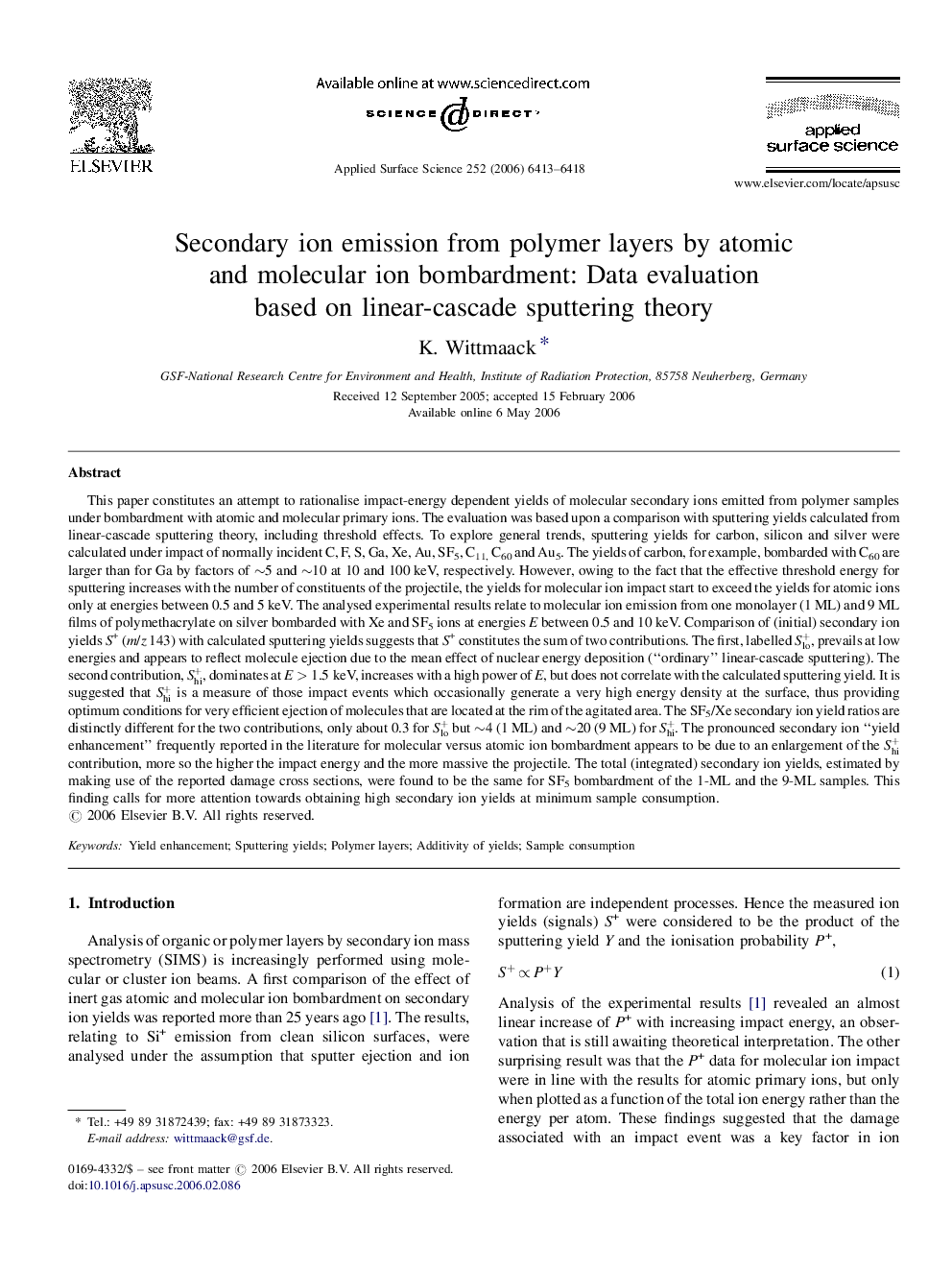| Article ID | Journal | Published Year | Pages | File Type |
|---|---|---|---|---|
| 5368801 | Applied Surface Science | 2006 | 6 Pages |
This paper constitutes an attempt to rationalise impact-energy dependent yields of molecular secondary ions emitted from polymer samples under bombardment with atomic and molecular primary ions. The evaluation was based upon a comparison with sputtering yields calculated from linear-cascade sputtering theory, including threshold effects. To explore general trends, sputtering yields for carbon, silicon and silver were calculated under impact of normally incident C, F, S, Ga, Xe, Au, SF5, C11, C60 and Au5. The yields of carbon, for example, bombarded with C60 are larger than for Ga by factors of â¼5 and â¼10 at 10 and 100Â keV, respectively. However, owing to the fact that the effective threshold energy for sputtering increases with the number of constituents of the projectile, the yields for molecular ion impact start to exceed the yields for atomic ions only at energies between 0.5 and 5Â keV. The analysed experimental results relate to molecular ion emission from one monolayer (1 ML) and 9 ML films of polymethacrylate on silver bombarded with Xe and SF5 ions at energies E between 0.5 and 10Â keV. Comparison of (initial) secondary ion yields S+ (m/z 143) with calculated sputtering yields suggests that S+ constitutes the sum of two contributions. The first, labelled Slo+, prevails at low energies and appears to reflect molecule ejection due to the mean effect of nuclear energy deposition (“ordinary” linear-cascade sputtering). The second contribution, Shi+, dominates at EÂ >Â 1.5Â keV, increases with a high power of E, but does not correlate with the calculated sputtering yield. It is suggested that Shi+ is a measure of those impact events which occasionally generate a very high energy density at the surface, thus providing optimum conditions for very efficient ejection of molecules that are located at the rim of the agitated area. The SF5/Xe secondary ion yield ratios are distinctly different for the two contributions, only about 0.3 for Slo+ but â¼4 (1 ML) and â¼20 (9 ML) for Shi+. The pronounced secondary ion “yield enhancement” frequently reported in the literature for molecular versus atomic ion bombardment appears to be due to an enlargement of the Shi+ contribution, more so the higher the impact energy and the more massive the projectile. The total (integrated) secondary ion yields, estimated by making use of the reported damage cross sections, were found to be the same for SF5 bombardment of the 1-ML and the 9-ML samples. This finding calls for more attention towards obtaining high secondary ion yields at minimum sample consumption.
